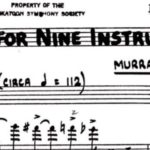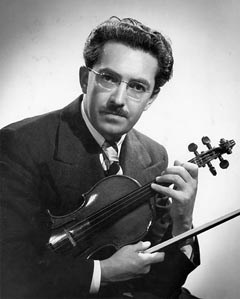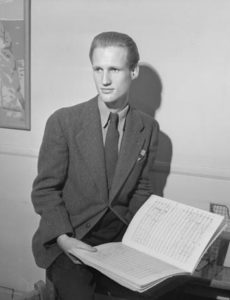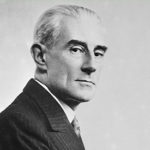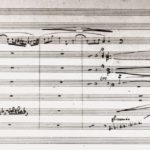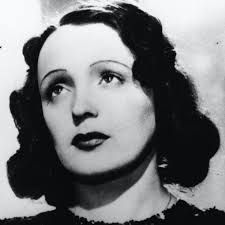Some fans of folk music may tell you that the Beer Barrel polka is the most famous polka in the world. To that, we say…there is another! The Clarinet Polka (often catalogued as “Klarinett-Polka” or “Klarinettpolka”) is known the world over for possessing one of the most infectious folk melodies ever created. Its upbeat, twirling nature is synonymous with the polka genre, and its simple brilliance has inspired numerous modern renditions. Every clarinetist worth their chops has been inspired to play this at some point in their career. It is odd, then, that (after more than 100 years in existence) the compositional authorship of this beloved tune should still be so hotly contested. The Clarinet Polka is believed to have been written by Polish composer Karol Namysłowski, originally titled “Dziadunio Polka” (after the Polish word for “grandfather”). However, many folk music historians (along with hosts of the popular Polish radio show “Lato z Radiem”, who use the song as an intro to their broadcasts) claim the song was not penned by Namysłowski at all! They insist that the polka in question was composed years earlier in Austria (not Poland) by a composer named A. Humpfat.
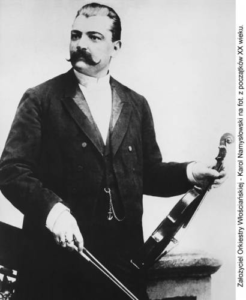
Similar accounts trace this version of the Clarinet Polka (titled “A Hupfata”) to the late 1890s. A vinyl recording of “A Hupfata” was released in 1907 that featured the musical stylings of the Band of the 14th Bavarian Infantry Regiment. This recording preceded Namysłowski’s 1913 copyright of “Dziadunio Polka” (as well as its subsequent 1915 recording in Chicago) by several years. Surely the existence of these records was proof positive that Karol was a folk music thief who somehow pulled off the greatest polka heist of all time…or was he? It turns out that neither the pro-Namysłowski nor the pro-Humpfat camps are exactly spot on in their respective beliefs surrounding the Clarinet Polka’s “true composer”. There was indeed a piece of folk music that resembles the Clarinet Polka as we know and love it today, and its origins can be traced to the end of the 19th century. Composed in today’s Austria (then Bavaria), it was originally titled “Klarinetten Muckl” and appeared printed for the first time in 1906 (in a collection of “Known Songs and Dances” arranged for accordion by Otto Thirsfeld and published by J. Weinberger). A copy of this collection’s first edition can still be viewed at the Austrian National Library in Vienna.
Otto Thirsfeld listed the composer of “Klarinetten Muckl” as “Anonymous”, suggesting that the tune had never belonged to anyone, per se. The missing link to this whole musical mystery can be seen clear as day when translating “Klarinetten Muckl” from standard German into the traditional Bavarian dialect: The song’s title becomes “Ein Gehüpfter” or “Jumping”. Through a linguistic game of Telephone, “Ein Gehüpfter” was morphed into “A Hupfata” by the many labels who recorded the song in its original printed form. Without a definite composer to credit this outrageously popular tune to, certain labels resorted to warping the polka’s altered title even further to make up a name! And so, “A. Humpfat” was born, never having quite existed in the first place. Since no one came forward to copyright what could only be referred to as a “traditional melody” by today’s standards, Namysłowski decided to re-orchestrate the anonymous Bavarian hit for Polish traditional instruments and copyright that piece of music. He had every legal right to do this and drew on his own brilliance as a composer of folk music to introduce the definitive version of the Clarinet Polka to its most enduring fanbase: his native Poland.
The timing and cultural significance of Namysłowski’s rise to fame as a composer cannot be overstated enough. Having attended grade school in Lublin while Poland was still partitioned and under Russian control, he was forbidden to speak his own language or engage in any display of cultural pride. In retaliation for this suppression, and after years of sneaking out of his parents’ home to listen to folk bands at local inns and taverns, Karol graduated from the Warsaw Institute of Music to form the Namysłowski Peasant Orchestra. Based in Zamość, Poland, the band was composed of talented farmers who had learned to play their respective instruments from Karol. Everyone in the group wore traditional Polish cultural dress, as did Karol who served as the group’s bandleader. Karol’s decision to totally embody Polish pride within his group was praised by polka historian Joe Oberaitis, who fondly remarked that “he wrote polkas as nobody else could do it… even supplying [bandmates] with instruments at his own expense! [Karol Namysłowski] literally wore his Polishness – much to the dismay of the authorities – and the countryside

was filled with the beautiful strains of mazurs, krakowiaks, obereks and of course, a wealth of rousing polka compositions.” After lighting a flame of national pride for the people of Poland, Namysłowski traveled to the United States to establish himself as a composer of international renown. Copyrighting his re-orchestrated “polka chart topper” in 1913, Namysłowski used the Clarinet Polka and its first recording in 1915 to singlehandedly secure the reputation of his band throughout the continental United States.
So it was that, nearly ten years later, the players of the Namysłowski Peasant Orchestra traveled to the United States for one of the biggest international tours in Polish folk music history: 3 months, 80 concerts, spread out over 14 states. Holding their first concert of the tour at the Metropolitan Opera House in New York City, they were invited to perform at the White House for President Calvin Coolidge. Victor Records jumped at the opportunity to sign the group to its label, and at the conclusion of their tour invited Karol and the musicians of the NPO to make 10 back-to-back records in Camden, New Jersey. Namysłowski didn’t just find a diamond in the rough with the Clarinet Polka. He saw in its simple and repetitive refrain an endless array of opportunities for musical expression, especially for his homeland’s improvisatory folk music traditions. The Namysłowski Peasant Orchestra is still in existence today as the Polish Symphony Orchestra, and although their founder penned hundreds of folk compositions during his long and successful career, none is remembered with more pride by the people of Poland than the (literal) grandfather of all polkas: the Clarinet Polka.
You can hear this played by the SSO on our Night at Oktoberfest concert.




